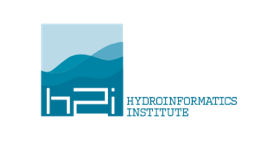H2i Balkans
Floods have large consequences for communities and individuals. Better flood forecasting would lead to better real time warnings and planning, which would mean enhanced social sustainability in the region. The proposed project merges the potential of Earth Observation data with Computer Vision and Machine Learning technologies, to create improved flood forecasting and mitigation.

Year founded
2018
Country
Sarajevo, Bosnia and Herzegovina
Sector
Water management
Stage
In development
The challenge
Regional flood forecasting and modelling is an odl and persisting problem in the hydro-logical sciences. The problem is even more pronounced in Bosnia and Herzegovina due to the inadequate hydro-meteorological monitoring network. The responsibility for hydrological and meteorological data collection processing and dissemination in the country lies with the Federal Hydro Meteorological Institute (FHMI) and several Water Agencies. There were more than 500 well-functioning rainfall stations before the war, while at present, less than 100 remain operational. The destroyed monitoring network represents a pain point not only for the FHMI, but also for many agencies, ministries and the private sector. There is an urgent need to explore solutions for this problem.
The solution
Our team plans to bring together advances in remote sensing, machine learning to process data and computer vision techniques to produce accurate yet cost-efficient solutions. The approach of this project is to extract information relevant to rainfall–runoff behavior from remotely sensed observable catchment attributes. Subsequently, deep learning will be used to map the data into stream flow that depends on catchment characteristics and dynamic meteorological properties.

Results
The pilot is in the developing phase. However, it is important to highlight the scalability of the proposed approach. Namely, with global coverage of EO data and the effectiveness of computer vision and ML demonstrated within this project, it will be reasonably simple to replicate the approach on other catchments in Bosnia and Herzegovina and beyond.

